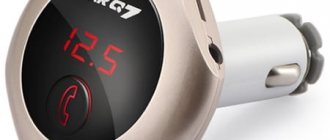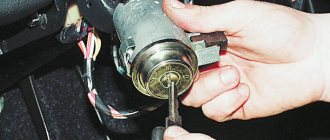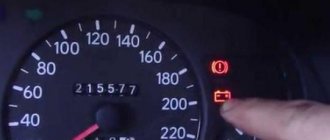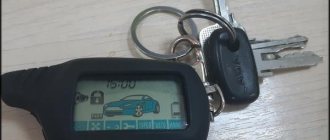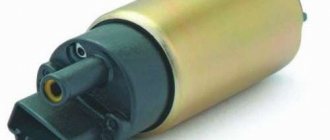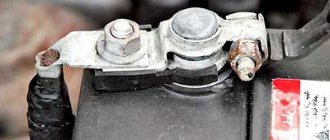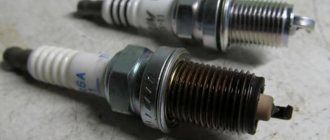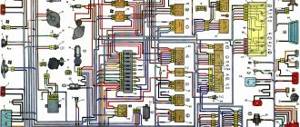Car owners try to maintain the car in good condition and monitor its external presentability. Technical inspection and washing have become common procedures for motorists. Some of them make excessive efforts to keep their cars clean and manage to wash the engine incorrectly. After such events, it is quite natural that the car begins to twitch, and the engine itself begins to trip. It is necessary to wash the engine very carefully, otherwise the consequences may cost the car owner a large amount of money and significantly impact the personal budget. Let's try to find out why the car jerks after washing and what to do in this case.
After washing, the car jerks: what was the reason?
The car behaves this way for a reason. In many cases, this factor indicates a malfunction of the engine itself or improper operation of the cylinders. This happens for a number of reasons, the main of which are directly related to:
- Water getting into spark plug wells;
- The appearance of disturbances in the functioning of sensors;
- Damage to important engine components.
When liquid (water) gets into the spark plug wells, a spark does not form.
The charge supplied to the spark plugs spreads in different directions and, with prolonged use in this mode, contributes to the complete failure of the spark plugs. With sensors, problems occur due to alkaline cleaning agents used for cleaning. If they get on the sensors, this usually leads to their unstable operation and subsequent complete breakdown. As for damage to individual engine components, malfunctions in them arise due to inaccurate washing. Especially when it comes to high pressure washing. Moreover, it is very important to note here that there are many more problems after careless washing. Many of them are hidden and manifest themselves after a fairly long period of time.
Why does my car jerk after washing?
If the car jerks after washing, this indicates that there is a malfunction in the engine and one (or more) cylinders are not working correctly. There may be several reasons for this:
- The water ended up in the candle wells. If a similar situation arises, then the charge supplied to the spark plugs does not form an “even” spark and spreads to the sides. If the spark plugs operate for a long time in this mode, they are likely to fail quickly;
- Problems with sensors. If alkaline products were used when washing the engine, there is a possibility that they got on the sensors. This may lead to their incorrect operation or failure;
- Damage to other engine components. Car manufacturers warn that you need to wash the engine very carefully, without applying high pressure water to the engine. Some drivers neglect this advice, resulting in damage to one or more engine units.
There are many problems that can arise with the engine due to improper washing, and some of them may be “hidden”, that is, they will not manifest themselves in one day, so it is important to wash the engine correctly.
Article on the topic: How to clean the mass air flow sensor
What should the driver do?
If there is a problem, the engine will definitely stall. It’s quite difficult not to notice this. With such a pronounced nature of the violation, it is not recommended to travel by car. It is necessary to check the engine for serviceability and identify violations immediately, otherwise it can lead to more serious consequences. To definitely protect yourself from an unpleasant scenario of events, you need to perform the following sequence of actions:
- Bring the car to the premises for diagnostics;
- Inspect and then wipe with dry material the contacts, wiring and the most important ignition elements;
- Remove the coils and blow them out using compressed air;
- Remove excess moisture from the candles (this is done using compressed air);
- Assemble and start the engine.
After starting, the car needs to run continuously for some time. 3 minutes is enough for this. Next you need to drive the car and see if there is any friction in the engine itself. The problem is considered successfully resolved if no violations were identified as a result of the inspection.
Watch a video about how not to wash your engine:
Many car enthusiasts wonder why the car jerks after washing the engine. This is an unpleasant situation. This behavior can scare even experienced drivers, let alone beginners. Usually, the reason for such indistinct behavior of the car is an unsuccessful wash. Therefore, the owner needs to know how to properly wash the engine of his vehicle. It is also advisable to familiarize yourself with how to fix an existing problem. In fact, the reasons for the motor tripping lie on the surface, and no special skills should be required in identifying and eliminating the problem.
Why does the car jerk after washing the engine? The main problem is the engine tripping. Essentially, this is a malfunction of the engine, which manifests itself in the failure of one of the cylinders. After washing, this phenomenon occurs for the following reasons:
- Moisture has entered the spark plug wells. At the same time, the charge going to the spark plug contacts spreads to the sides without forming a spark. This situation leads to rapid failure of the spark plugs;
- When using alkaline detergents, sensors may be damaged;
- If equipment that supplies water under high pressure was used, then there is a possibility of breakage of some fragile parts of the power unit. Therefore, most car manufacturers prohibit the use of high-pressure units for engine washing.
Is it necessary to wash the engine?
There are many opinions and rumors regarding this issue. There are always pros and cons, pros and cons. One of the reasons why the engine is washed is heavy leaks of oil, antifreeze, or antifreeze. The biggest cause of this, of course, is the oil sludge on the engine. It interferes with normal cooling in the summer and the engine overheats. To see and then eliminate where the oil is leaking from, it’s a good idea to wash the engine in a car wash with special chemicals and knock it all down under pressure with water. Coolant corrodes contacts, engine harness wires, electronic control unit and other electrical components of the internal combustion engine, which can adversely affect the operation of the engine.
If the car is often driven outside the city, in the forest, or on rough terrain, dirt sticks heavily to the engine, cooling fan, and radiator. If you don’t knock the clay off the fan in time, it will create vibration and simply break the bearing over time, and you’ll have to replace it. And the cost reaches, especially on foreign cars, colossal amounts.
This way, you can be sure that engine washing is necessary in some cases. But doing it just for the sake of prevention, or against dust, makes no sense. After all, the price of such a procedure can result in tens, or even 100 thousand rubles. One of the expensive components in the engine compartment is the electronic engine control unit. Its cost is measured in tens of thousands of rubles, it all depends on the make of the car. The second most expensive part and the most risk of failure is the ignition coil. It's not cheap. Why are these expensive parts listed in the engine compartment? The thing is that when washing the engine, the car starts to misfire, precisely because of them.
It will be useful: Causes of Nissan Primera car failure to start and troubleshooting
Let's take a closer look at the nuances of the car shaking after washing the engine, how to identify the cause of the shaking, eliminate it on site or in a car service center, and how to prevent water from getting on the electrical elements.
How to fix?
So, you visited the car wash, and after that the engine began to misfire. This problem needs to be solved, and quickly enough. Otherwise, this may lead to other damage that will be more serious. And simply jerking the car seriously irritates the driver. The first thing to do is put the car in a warm and dry place. Your task is to dry the engine; doing this in the rain is quite problematic. Wipe all wiring; it is also advisable to blow out the parts with compressed air. Also check all ignition elements; they should be blown out. Check all contacts.
If necessary, they are cleaned and coated with a special lubricant. If the car is equipped with ignition coils, then it is necessary to remove the coils one by one and blow them through. This will take quite a lot of time, but at the same time, the problem will be guaranteed to be solved.
Pay attention to the spark plug wells. This is again done with compressed air. The spark plugs themselves can be heated using a gas burner. It is advisable to check their performance. After washing they may become damaged.
Having carried out all these steps, start the engine and monitor its operation. Usually, problems no longer arise, but if the jerking does not stop, then it makes sense to check the functionality of individual ignition elements. Carry out computer diagnostics of the engine, if possible. This will allow you to determine which specific cylinder has problems, and it will also help identify a problem with the sensors. If it is not possible to do diagnostics, or you have a carburetor car, then you can use the applied diagnostic method. To do this, while the engine is running, the high-voltage wires are pulled off the spark plugs one by one. If the cylinder is in order, the engine will begin to stall; if there is a malfunction, no changes will be observed.
Having identified the problem cylinder, one by one checks all the ignition elements that relate to it. First of all, they look at the condition of the candle. To do this, unscrew it; if there are problems with the fuel supply, it will be dry; if there is no spark, the electrode will be wet. Inspect the part; the electrode should have a sandy or brown color. If it is black, then it makes sense to replace the spark plug. The test is carried out using a special stand; if it is not there, then you can simply connect it to a known-good high-voltage device and place the spark plug on any metal part. After this, turn the starter for several seconds. A working spark plug produces a blue-white spark. If the spark is orange or red, then the spark plug is faulty.
The operation of the high-voltage wire and ignition coil is checked by replacing it with a known good one. If a problem is identified, replace the damaged element. Sensors are checked by either replacing them with serviceable ones, or by clearing errors from the on-board computer. The problematic sensor is replaced.
What to do if the engine jerks after washing
If after washing the car the engine starts to stall, it is not recommended to continue driving it. It is urgent to check the motor so that the problem does not lead to more serious malfunctions. We recommend following the following algorithm:
- Place the car in a warm, dry room - a garage;
- Next, take a dry rag and wipe all contacts, ignition elements, and wiring. If you have a can of compressed air, you can use it to blow out the elements;
- After this, the ignition coils are removed one by one, and each of them is purged with compressed air;
- The next step is to move on to the candles. Use compressed air to remove moisture from the spark plug wells if it has gotten there. Experts also recommend using a gas burner to warm up the spark plugs themselves;
- After this, assemble the motor and start the engine;
- After starting, let the car run for 2-3 minutes, and then try to drive it. If the engine does not stall, the problem can be considered solved. When the problem persists after drying, return the car to the garage (if diagnostic tools are available) or take it to a service center.
When drying does not correct the problem, water has most likely entered one of the cylinders or its components. Computer diagnostics will allow you to determine which cylinder is not working correctly, and will also help identify errors in the operation of the sensors, if any.
Having decided on the problematic cylinder, you need to understand what exactly is causing the malfunction.
Check all the ignition elements that relate to this cylinder, and it is recommended to start diagnostics with the spark plugs - they are more likely than other parts to cause problems in engine operation. Inspect the spark plug electrode for carbon deposits or check the spark plug's operation on a bench. When the problem is not with the spark plugs, it is also recommended to inspect the high-voltage wires and ignition coils. Also, do not forget about checking the sensors that are directly involved in the operation of the engine. We recommend reading: Cylinder misfire: causes, diagnostics, troubleshooting methods
It is important to remember that when washing a car engine, you should never use alkaline cleaners. There are special shampoos and aerosols for cleaning the engine, and if the goal is to keep the engine clean, it is better to use them than household cleaners.
( 429 votes, average: 4.62 out of 5)
How to melt the ice in the washer reservoir
How to choose car covers: main types and materials
Related Posts
How to wash the engine?
To avoid dancing with tambourines around a faulty car, you should wash the engine properly. Do not use high water pressure for washing. It is also not recommended to use shampoos for contactless washing to wash the engine; they contain alkali, which negatively affects the condition of the engine.
The safest way is to use a special aerosol. Before this, all attached parts are covered. The substance should be applied to a warm engine. After which, let the car sit for half an hour. All that remains is to wash off the aerosol with a weak stream of running water.
Conclusion
. The engine sometimes needs to be washed, this has a positive effect on its heat transfer. But this must be done carefully. If you do this incorrectly, then most likely you will have to solve the question of why the car jerks after washing the engine. The reasons for this are directly related to moisture getting into the ignition system, as well as the sensors. To resolve this issue, you will need to test all of these items.
Increasingly, car owners decide to undergo such a procedure as washing the engine of their favorite car. It is certainly necessary to clean the power unit, since its condition and durability depend on it. But sometimes after water procedures the engine gives drivers a surprise - the engine stalls or does not start. In order to respond to such a turn of events in a timely manner, it is necessary to understand what actions to take next.
Various problems may occur after washing your car.
Causes
It’s worth understanding what the phrase “motor troubles” means. Troubleshooting is a malfunction of the engine in which one and four cylinders stop working normally. The consequence of such a malfunction may be an increased amplitude of operation of the power unit and constant vibration. At idle speed, an engine with a failed cylinder will operate unevenly, with dips.
Sometimes when driving with an engine in which only part of the cylinders are working, the car jerks noticeably. Fuel consumption also increases sharply, power is lost, and problems arise with starting the engine, especially when washing the unit in winter.
There may be several reasons why the power unit shakes after washing.
- During washing, water got into the spark plug wells. In this case, due to the presence of moisture, the spark plug cannot produce a spark, and the cylinder, as a result, fails.
- Problems with the engine can also occur due to sensors being damaged after contact with alkaline shampoo.
- Sometimes during cleaning they use equipment that delivers a stream of water under high pressure. Such methods of cleaning the motor can lead to damage to those parts that are vulnerable. For this reason, any car manufacturer defines engine washing using high-pressure apparatus as unacceptable.
Video about possible causes of the malfunction:
If we summarize the reasons for the malfunction of a power unit that has undergone cleaning, then they all boil down to the ingress of water into those parts of the engine that can function properly only in a dry state.
How to fix the situation
Since water is the cause of problems after washing, it is necessary to take all measures to remove it.
To do this, you need to place the car in a dry place and thoroughly wipe all the wiring or blow it out with a compressor. The same actions should be applied to the armored wires of the spark plugs. Next, it is important to pay attention to the battery terminals and make sure they are securely attached.
Sometimes a gray coating appears on the terminals, which impairs contact. It (plaque) can be easily removed with water. When the driver has washed the terminals, he must wipe them until they are perfectly dry and tighten them thoroughly.
The battery terminals must be securely fastened
If water did not enter the engine compartment during washing, then the above measures should be sufficient to bring the engine into working condition.
In the event that moisture has penetrated under the hood, a number of additional efforts will have to be made to bring the unit in order.
Tidying up the engine compartment
You need to start inspecting the engine compartment of a car that stubbornly refuses to start by checking the ignition system. It is in this part of the unit that problems most often arise after the owner has carefully washed the power plant of his car.
In those cars that are equipped with a distributor structure, it is necessary to disassemble the distributor itself, and then remove any remaining moisture under the cover. And only when everything is thoroughly blown and wiped, you can move on to the armored wires, wiping them until they are dry. It is also important to remember about spark plug wells - they must be thoroughly dried.
Speaking about blowing out spark plug wells, it is worth noting the following: often when spark plugs are flooded during a wash or under other circumstances, drivers try to start the car using a choke, but this strategy is ineffective. The best thing you can do to blow out the spark plugs is to remove the choke, press the gas pedal, and start the engine. Thus, high-quality cleaning will be carried out, and the unit will start.
If it so happens that the car has a distributorless ignition system, which is equipped with an individual coil for each individual cylinder, then you will have to be patient. The shutter speed will be needed in order to remove all the coils one by one, while blowing and wiping the spark plug wells. In this situation, there is a plus and a minus: the distributor cover is more difficult to remove than the coils, but some of the coils may be difficult to access, which also entails considerable effort and time.
When cleaning spark plugs, you need to make sure they are in working order. To do this, you need to unscrew them and carefully inspect them.
Spark plugs must be in working order
When all procedures are completed, you can try to start the car.
What to do if the car jerks after washing
Currently reading:
Winter engine oil: which one is better to fill
Oct 31, 2020
Engine oil is frozen: how to start a car
Oct 30, 2020
When the engine stalls after washing, you need to have some kind of action plan (make a checklist) to identify the reasons. But before that, you should once again wipe the motor and wiring dry, blow all areas with air from the compressor, and clean all contacts from plaque. For hard-to-reach places, it is optimal to use compressed air rather than rags.
By the way, in some places the moisture can dry out on its own if you put the car in a dry, ventilated room. Of course, you need to check the spark plugs. This is not difficult to do, but only if you have a spark plug wrench at hand. If the spark plugs are unscrewed, it is better to clean the electrodes from carbon deposits. In addition, it is necessary to wipe the spark plug wells themselves.
If the engine has a distributor, then you not only need to wipe it outside, but also remove the cover to dry the interior. In engines without a distributor, you will have to tinker a little longer, since you will need to dry the ignition coils on each cylinder and then make sure they are working.
If the driver is completely sure that the engine is dried after washing and the contacts are cleaned, and the spark plugs are in perfect order, but the car still jerks while driving and under load, it is better to immediately contact a service center, where they will carry out in-depth diagnostics and determine the faulty one. cylinder and help fix the problem.
Other faults
Sometimes drivers encounter various engine problems that are not directly caused by washing the power plant, and since some of these problems are common, it is worth knowing about them.
- For example, sometimes drivers, having underestimated the terrain on a particular section of the road, drive into a puddle that turns out to be unexpectedly deep. In such situations, the engine often stalls. If the unit is silent, then this means only one thing: water has flooded the distributor cover, wires and coil. With such a diagnosis, you should not waste time trying to start the car. It is better to find a clean rag and thoroughly wipe the flooded parts of the engine until they are dry. As a result, the unit usually starts.
If you don’t want to get out of the car into the arms of a cold and deep puddle, you can simply wait 15-20 minutes - during this time the wires should have time to dry.
Broken timing belt
- Another unpleasant circumstance that drivers face is a suddenly stalled car. If the car has a motor with a timing belt, then most likely the reason for the failure of the unit lies in its (belt) breakage. A sign of a broken belt is a starter that turns the engine faster than usual.
If everything is in order with the belt, then you should perform the following steps. Pay attention to the fuel pump and make sure that it pumps, check for a spark (if there is one), inspect the carburetor and make sure that it is not clogged and there is no overflow (to do this, you need to remove the air filter cover to see if gasoline is flowing) .
- Electronic ignition can also complicate life, because of problems with which the engine sometimes stalls and in some cases stalls. The insidiousness of this breakdown lies in the fact that it can make itself felt somewhere in the wilderness, when there is nowhere to wait for help. To avoid such troubles, you need to check the ignition wires leading from the distributor to the spark plugs before leaving.
Video about checking ignition wires:
If the wires are old, then there is a risk that they will periodically fly off the spark plugs. Such jumps are dangerous for two reasons: a break in the power supply to the spark plug and overvoltage (when several wires fly off), which can damage the ignition coil. In turn, without this coil the unit will not be able to start. Therefore, it is recommended to replace worn ignition wires without delay.
- Many car enthusiasts have encountered such a problem as engine failure in winter after ideal operation in summer. Spare, oil-free spark plugs and simple manipulations with the cylinders will help you get out of such an uncomfortable situation.
Before starting the car in sub-zero temperatures, you need to unscrew the spark plugs, use a syringe to pour 5 cubes of motor oil into any two cylinders, and use the starter to “drive” the engine a little. When the procedure is completed, you can screw in the spare spark plugs and start the car. The unit should start without problems. In this situation, oil helps because its presence in the cylinders significantly increases compression, as a result of which the working mixture ignites and the engine starts.
Car failure in winter
The conclusion is simple: in order for the engine to start and not stall, it must be protected from moisture and always be prepared for easy resuscitation of the engine compartment mechanisms.
Subscribe to our channel on Telegram. Latest and current news from the automotive world!
